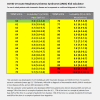Development of a Prediction Model for COVID-19 Acute Respiratory Distress Syndrome in Patients With Rheumatic Diseases: Results From the Global Rheumatology Alliance Registry
- PMID: 35869686
- PMCID: PMC9350083
- DOI: 10.1002/acr2.11481
Development of a Prediction Model for COVID-19 Acute Respiratory Distress Syndrome in Patients With Rheumatic Diseases: Results From the Global Rheumatology Alliance Registry
Abstract
Objective: Some patients with rheumatic diseases might be at higher risk for coronavirus disease 2019 (COVID-19) acute respiratory distress syndrome (ARDS). We aimed to develop a prediction model for COVID-19 ARDS in this population and to create a simple risk score calculator for use in clinical settings.
Methods: Data were derived from the COVID-19 Global Rheumatology Alliance Registry from March 24, 2020, to May 12, 2021. Seven machine learning classifiers were trained on ARDS outcomes using 83 variables obtained at COVID-19 diagnosis. Predictive performance was assessed in a US test set and was validated in patients from four countries with independent registries using area under the curve (AUC), accuracy, sensitivity, and specificity. A simple risk score calculator was developed using a regression model incorporating the most influential predictors from the best performing classifier.
Results: The study included 8633 patients from 74 countries, of whom 523 (6%) had ARDS. Gradient boosting had the highest mean AUC (0.78; 95% confidence interval [CI]: 0.67-0.88) and was considered the top performing classifier. Ten predictors were identified as key risk factors and were included in a regression model. The regression model that predicted ARDS with 71% (95% CI: 61%-83%) sensitivity in the test set, and with sensitivities ranging from 61% to 80% in countries with independent registries, was used to develop the risk score calculator.
Conclusion: We were able to predict ARDS with good sensitivity using information readily available at COVID-19 diagnosis. The proposed risk score calculator has the potential to guide risk stratification for treatments, such as monoclonal antibodies, that have potential to reduce COVID-19 disease progression.
© 2022 The Authors. ACR Open Rheumatology published by Wiley Periodicals LLC on behalf of American College of Rheumatology.
Figures




References
-
- World Health Organization . Clinical management of COVID‐19: interim guidance, 27 May 2020. Geneva: World Health Organization; 2020.

